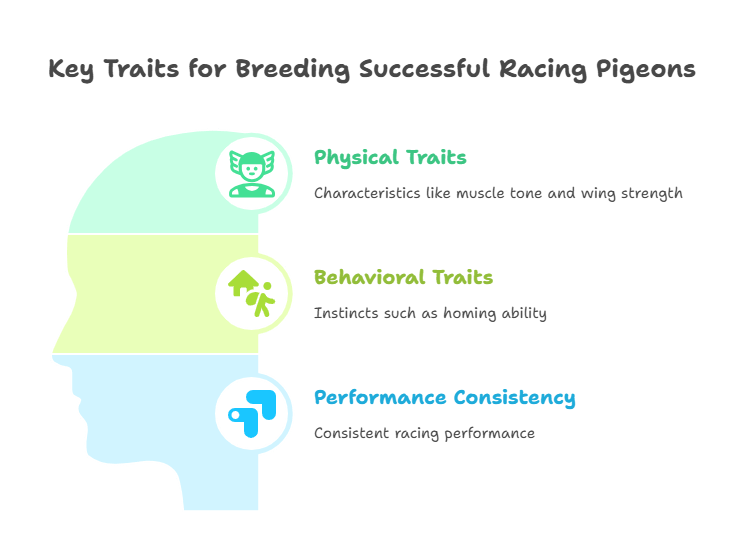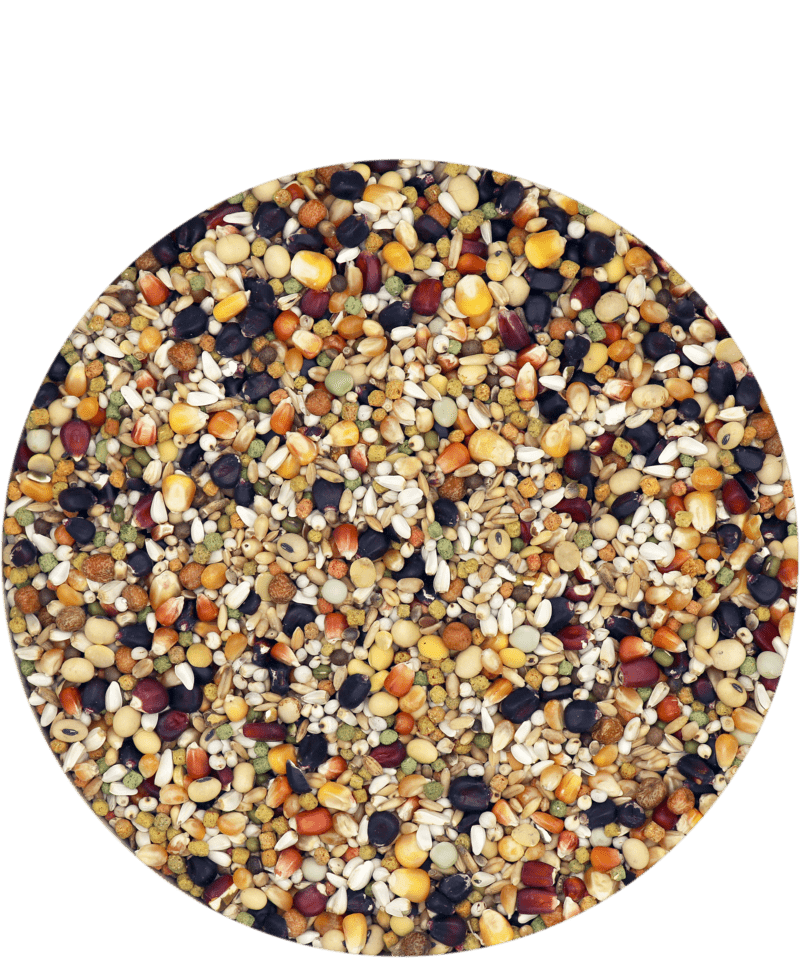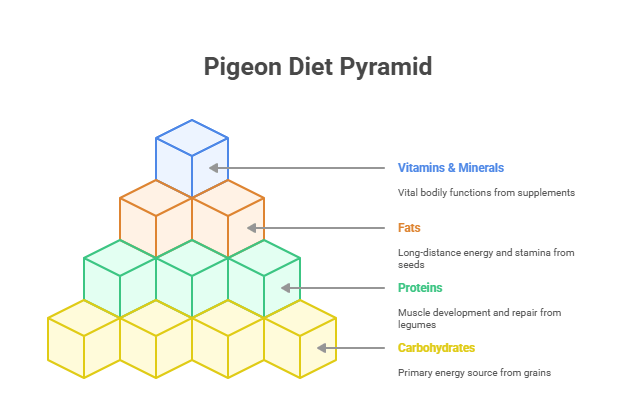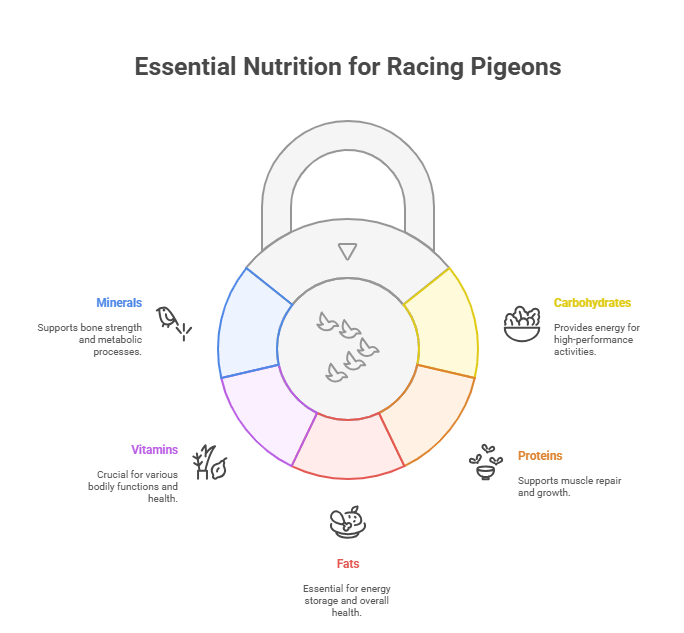racing pigeons corn and seeds
As an expert in the field of pigeon corn and seeds with over 20 years of experience, I’m pleased to provide you with a comprehensive overview of the various grains, legumes, and oilseeds that are commonly used in the pigeon feed and seed industry. This information is presented in a clear and accessible manner, with the aim of educating both novices and seasoned professionals alike click here for the youtube facts on pigeon corn
White Pigeon Wheat:
A popular and nutritious grain for pigeons, white pigeon wheat is a high-quality variety of wheat that is prized for its excellent protein content and digestibility.
It is a soft, white-colored wheat with a plump, rounded kernel that is easily consumed by pigeons.

White pigeon wheat is a versatile ingredient that can be used as the primary grain in pigeon feed mixes or as a supplementary component, adding valuable protein, carbohydrates, and other essential nutrients to the diet.
When sourcing white pigeon wheat, it is important to ensure that it is free of contaminants, such as mycotoxins or other harmful substances, and that it meets the appropriate quality standards for pigeon feed.
White Dari:
Dari, also known as white sorghum, is a versatile grain that is highly valued in the pigeon feed and seed industry.
It is a drought-resistant and hardy cereal grain that provides a reliable source of carbohydrates, protein, and other essential nutrients for pigeons.
White dari is particularly prized for its relatively low fiber content and high energy density, making it an excellent choice for inclusion in pigeon feed mixes.
When incorporating white dari into pigeon diets, it is important to ensure that it is properly cleaned and processed to remove any potential contaminants or toxins.
Red Dari:
Red dari, a variant of the sorghum grain, is a common ingredient in pigeon feed and seed mixes.
Compared to its white counterpart, red dari is typically higher in tannins and other phenolic compounds, which can impact palatability and digestibility for some pigeon breeds.
However, red dari can still be a valuable component of a balanced pigeon diet, providing carbohydrates, protein, and other essential nutrients.
When using red dari in pigeon feed, it is important to consider the specific nutritional needs and sensitivities of the pigeon breed, as well as to monitor feed intake and palatability.
Safflower:
Safflower is an oilseed crop that is often included in pigeon feed and seed mixes, as it provides a rich source of healthy fats and other essential nutrients.
The seeds of the safflower plant are high in linoleic acid, an omega-6 fatty acid that is important for pigeon health and plumage development.
Safflower seeds can be used whole or crushed, and they are often combined with other grains, legumes, and oilseeds to create a balanced and varied pigeon diet.
When selecting safflower for pigeon feed, it is important to ensure that the seeds are fresh, free of contaminants, and have not been subjected to excessive processing or storage conditions that could compromise their nutritional value.
Pigeon Barley:
Pigeon barley is a specialized variety of the cereal grain barley that is specifically cultivated and processed for use in pigeon feed and seed mixes.
This type of barley is typically lower in fiber and higher in protein and energy than standard feed barley, making it a more suitable choice for pigeons.
Pigeon barley can be used as a primary grain component in pigeon feed or as a supplementary ingredient, providing valuable carbohydrates, protein, and other essential nutrients.
When incorporating pigeon barley into pigeon diets, it is important to ensure that the grains are properly cleaned, sorted, and processed to remove any potential contaminants or anti-nutritional factors.
Broken Rice:
Broken rice is a byproduct of the rice milling process that is often used in pigeon feed and seed mixes.
While it may have a slightly lower nutritional profile compared to whole, unbroken rice, broken rice can still serve as a valuable source of carbohydrates and other essential nutrients for pigeons.
Broken rice is typically more affordable and easier to source than whole-grain rice, making it a cost-effective option for pigeon feed producers and enthusiasts.
When using broken rice in pigeon diets, it is important to ensure that the grains are clean, free of contaminants, and properly processed to optimize their nutritional availability and palatability for pigeons.
Peeled Oats:
Peeled oats, also known as naked oats, are a type of oat grain that has had the tough outer hull removed, making them more easily consumed and digested by pigeons.
Peeled oats are a rich source of protein, fiber, and other essential nutrients, and they can be a valuable component of a balanced pigeon diet.
They are often used in pigeon feed and seed mixes, either as a primary grain or as a supplementary ingredient, to provide additional nutritional support for pigeons.
When selecting peeled oats for pigeon feed, it is important to ensure that they are of high quality, free of contaminants, and have been properly processed to optimize their nutritional value and palatability for pigeons.
Brown Linseed:
Brown linseed, or flaxseed, is an oilseed that is commonly included in pigeon feed and seed mixes due to its high content of omega-3 fatty acids and other beneficial nutrients.
The oil contained within the linseed can help to promote healthy feather development, skin condition, and overall pigeon health.
Brown linseed can be used whole, crushed, or in the form of linseed meal, and it is often combined with other grains, legumes, and oilseeds to create a balanced and varied pigeon diet.
When using brown linseed in pigeon feed, it is important to ensure that the seeds are fresh, free of contaminants, and have been properly processed to optimize their nutritional value and palatability for pigeons.
Black Coleseed:
Black coleseed, also known as rapeseed, is an oilseed crop that is sometimes included in pigeon feed and seed mixes.
The seeds of the black coleseed plant are high in beneficial fatty acids, protein, and other essential nutrients that can support pigeon health and performance.
However, it is important to note that black coleseed can also contain glucosinolates, which can be toxic to pigeons in high concentrations.
When using black coleseed in pigeon feed, it is crucial to carefully select and process the seeds to minimize the presence of potentially harmful compounds, and to ensure that the inclusion rate is within safe and recommended levels for the specific pigeon breed or strain.
Black Maize:
Black maize, also known as purple or blue corn, is a specialized variety of the corn plant that is sometimes used in pigeon feed and seed mixes.
This type of maize is typically higher in antioxidants, such as anthocyanins, compared to conventional yellow or white corn varieties.
The pigmentation and unique nutritional profile of black maize can make it an attractive component in pigeon diets, potentially providing additional health benefits and support for pigeons.
When incorporating black maize into pigeon feed, it is important to ensure that the grains are properly processed, free of contaminants, and that the inclusion rate is appropriate for the specific pigeon breed or strain.
Bordeaux Maize:
Bordeaux maize, a specialized variety of corn, is a popular ingredient in many pigeon feed and seed mixes.
This type of maize is characterized by its deep red-purple color and is often prized for its high carotenoid content, which can contribute to the development of vibrant plumage and other desirable physical traits in pigeons.
Bordeaux maize can serve as a valuable source of carbohydrates, protein, and other essential nutrients for pigeons, and it is often combined with other grains, legumes, and oilseeds to create a balanced and varied diet.
When selecting Bordeaux maize for pigeon feed, it is important to ensure that the grains are of high quality, free of contaminants, and have been properly processed to optimize their nutritional value and palatability for pigeons.
Red Maize:
Red maize, a distinct variety of corn, is another grain that is sometimes included in pigeon feed and seed mixes.
Similar to Bordeaux maize, red maize is characterized by its deep red or reddish-brown coloration, which can be attributed to the presence of carotenoid pigments.
These pigments can contribute to the development of vibrant plumage and other desirable physical characteristics in pigeons, making red maize a potentially valuable ingredient in their diets.
When using red maize in pigeon feed, it is important to ensure that the grains are of high quality, free of contaminants, and that the inclusion rate is appropriate for the specific pigeon breed or strain.
Premium Cribs Maize:
Premium cribs maize, a specialized variety of corn, is a high-quality grain that is often used in premium-grade pigeon feed and seed mixes.
This type of maize is typically characterized by its large, uniform kernels, high density, and excellent nutritional profile, making it a highly desirable ingredient for pigeon enthusiasts.
Premium cribs maize can serve as a primary grain component in pigeon diets, providing valuable carbohydrates, protein, and other essential nutrients to support the overall health and performance of pigeons.
When sourcing premium cribs maize for pigeon feed, it is crucial to ensure that the grains are of the highest quality, free of contaminants, and have been properly processed to optimize their nutritional value and palatability for pigeons.
Small Cribs Maize:
Small cribs maize, a variation of the corn grain, is a smaller-sized variety that is sometimes used in pigeon feed and seed mixes.
While it may not have the same visual appeal or uniform size as premium cribs maize, small cribs maize can still serve as a valuable source of carbohydrates, protein, and other essential nutrients for pigeons.
This type of maize may be more cost-effective or easier to source in certain regions, making it a practical option for some pigeon enthusiasts and feed producers.
When incorporating small cribs maize into pigeon diets, it is important to ensure that the grains are of high quality, free of contaminants, and that the inclusion rate is appropriate for the specific pigeon breed or strain.
Toasted Soya Beans:
Toasted soya beans, a processed form of the soybean, are a common ingredient in many pigeon feed and seed mixes.
The toasting process helps to improve the digestibility and palatability of the soya beans for pigeons, while also preserving their valuable protein, fat, and other essential nutrients.
Soya beans are a rich source of high-quality protein, which is essential for supporting the growth, development, and overall health of pigeons.
When using toasted soya beans in pigeon feed, it is important to ensure that the processing has been done properly and that the final product is free of any potential contaminants or anti-nutritional factors.
Maple Peas:
Maple peas, a specialized variety of field pea, are a legume that is often included in pigeon feed and seed mixes.
These peas are characterized by their distinctive reddish-brown color and are valued for their high protein content and overall nutritional profile.
Maple peas can serve as an excellent source of plant-based protein, as well as providing carbohydrates, fiber, and other essential nutrients that support the health and well-being of pigeons.
When incorporating maple peas into pigeon diets, it is important to ensure that the legumes are of high quality, free of contaminants, and that the inclusion rate is appropriate for the specific pigeon breed or strain.
Dun Peas:
Dun peas, another variety of field pea, are also commonly used in pigeon feed and seed mixes.
These peas are typically characterized by their dull, brownish-green color and are valued for their high protein content and overall nutritional profile.
Like maple peas, dun peas can serve as an excellent source of plant-based protein for pigeons, as well as providing carbohydrates, fiber, and other essential nutrients.
When selecting dun peas for pigeon feed, it is important to ensure that the legumes are of high quality, free of contaminants, and that the inclusion rate is appropriate for the specific pigeon breed or strain.
Large Green Peas:
Large green peas, a type of garden pea, are another legume that is commonly used in pigeon feed and seed mixes.
These peas are typically larger in size compared to their smaller counterparts and are valued for their high protein content, as well as their content of other essential nutrients.
Large green peas can serve as a valuable source of plant-based protein and other beneficial compounds that support the overall health and well-being of pigeons.
When incorporating large green peas into pigeon diets, it is important to ensure that the legumes are of high quality, free of contaminants, and that the inclusion rate is appropriate for the specific pigeon breed or strain.
Small Green Peas:
Small green peas, a variation of the garden pea, are also a common ingredient in pigeon feed and seed mixes.
While they may be smaller in size compared to their larger counterparts, small green peas can still provide a valuable source of plant-based protein, carbohydrates, and other essential nutrients for pigeons.
These peas may be more cost-effective or easier to source in certain regions, making them a practical option for some pigeon enthusiasts and feed producers.
When using small green peas in pigeon diets, it is important to ensure that the legumes are of high quality, free of contaminants, and that the inclusion rate is appropriate for the specific pigeon breed or strain.
Mung Beans:
Mung beans, a type of legume, are sometimes included in pigeon feed and seed mixes due to their high protein content and other beneficial nutritional properties.
These small, green beans can serve as a valuable source of plant-based protein, as well as providing carbohydrates, fiber, and other essential nutrients that support pigeon health and performance.
When incorporating mung beans into pigeon diets, it is important to ensure that the legumes are of high quality, free of contaminants, and that the inclusion rate is appropriate for the specific pigeon breed or strain.
Additionally, proper processing, such as soaking or cooking, may be necessary to improve the digestibility and palatability of mung beans for pigeons.
Milo,
a type of sorghum grain, is another cereal that is sometimes included in pigeon feed and seed mixes.
This grain is valued for its ability to provide a reliable source of carbohydrates, protein, and other essential nutrients for pigeons, while also being relatively low in fiber.
Milo can be used as a primary grain component in pigeon diets or as a supplementary ingredient, depending on the specific nutritional requirements and preferences of the pigeon breed or strain.
When selecting milo for pigeon feed, it is important to ensure that the grain is of high quality, free of contaminants, and that it has been properly processed to optimize its nutritional value and palatability for pigeons.
Buckwheat:
Buckwheat is a pseudocereal that is sometimes included in pigeon feed and seed mixes, offering a unique source of carbohydrates, protein, and other beneficial nutrients.
While not a true cereal grain, buckwheat can still serve as a valuable component in a balanced pigeon diet, providing a different nutritional profile compared to traditional grains.
The use of buckwheat in pigeon feed may also offer some additional health benefits, as it is a good source of antioxidants and other bioactive compounds.
When incorporating buckwheat into pigeon diets, it is important to ensure that the grain is of high quality, free of contaminants, and that the inclusion rate is appropriate for the specific pigeon breed or strain.
Canary Seed:
Canary seed, a small, round grain, is a common ingredient in many pigeon feed and seed mixes, particularly those designed for specialized or exotic pigeon breeds.
This type of seed is valued for its high content of protein, essential fatty acids, and other beneficial nutrients that can support the health and performance of pigeons.
Canary seed is often used as a supplementary ingredient in pigeon diets, providing a unique nutritional profile that can complement the primary grains and legumes used in the feed mix.
When selecting canary seed for pigeon feed, it is crucial to ensure that the grains are of high quality, free of contaminants, and have been properly processed to optimize their nutritional value and palatability for pigeons.
Yellow Millet:
Yellow millet is a cereal grain that is frequently included in pigeon feed and seed mixes, offering a reliable source of carbohydrates, protein, and other essential nutrients.
This type of millet is known for its relatively small size and easy digestibility, making it a suitable choice for inclusion in pigeon diets.
Yellow millet can be used as a primary grain component in pigeon feed or as a supplementary ingredient, depending on the specific nutritional requirements and preferences of the pigeon breed or strain.
When sourcing yellow millet for pigeon feed, it is important to ensure that the grains are of high quality, free of contaminants, and have been properly processed to optimize their nutritional value and palatability for pigeons.
Brown Linseed:
As previously discussed, brown linseed, or flaxseed, is a valuable oilseed that is commonly included in pigeon feed and seed mixes due to its high content of omega-3 fatty acids and other beneficial nutrients.
The oil contained within the linseed can help to promote healthy feather development, skin condition, and overall pigeon health.
Brown linseed can be used whole, crushed, or in the form of linseed meal, and it is often combined with other grains, legumes, and oilseeds to create a balanced and varied pigeon diet.
When using brown linseed in pigeon feed, it is crucial to ensure that the seeds are fresh, free of contaminants, and have been properly processed to optimize their nutritional value and palatability for pigeons.
Rapeseed:
Rapeseed, also known as canola or black coleseed, is an oilseed crop that is sometimes included in pigeon feed and seed mixes.
The seeds of the rapeseed plant are a source of beneficial fatty acids, protein, and other essential nutrients that can support pigeon health and performance.
However, it is important to note that rapeseed can also contain glucosinolates, which can be toxic to pigeons in high concentrations.
When using rapeseed in pigeon feed, it is crucial to carefully select and process the seeds to minimize the presence of potentially harmful compounds, and to ensure that the inclusion rate is within safe and recommended levels for the specific pigeon breed or strain.
Thistle Seed:
Thistle seed is a unique and specialized ingredient that is sometimes included in pigeon feed and seed mixes, particularly for certain breeds or for specific purposes.
These small, dark-colored seeds are known for their high content of protein, essential fatty acids, and other beneficial nutrients that can support pigeon health and performance.
The use of thistle seed in pigeon feed may be particularly valuable for promoting feather development, skin condition, and overall plumage quality in pigeons.
When incorporating thistle seed into pigeon diets, it is important to ensure that the seeds are of high quality, free of contaminants, and that the inclusion rate is appropriate for the specific pigeon breed or strain.
In summary, this comprehensive overview of pigeon corn and seeds covers a wide range of grains, legumes, oilseeds, and other ingredients that are commonly used in the pigeon feed and seed industry. Each of these components offers unique nutritional profiles and characteristics that can contribute to the overall health and performance of pigeons. As an expert in this field with 20 years of experience, I hope that this information provides a clear and thorough understanding of the various options available for creating a balanced and effective pigeon diet. Remember, when selecting and incorporating these ingredients into pigeon feed, it is crucial to consider the specific nutritional needs and preferences of the pigeon breed or strain, as well as to ensure that the highest quality and safest products are used.



